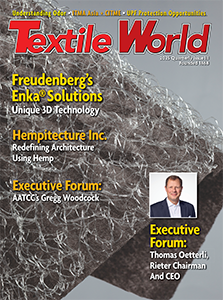DEARBORN, Mich. — November 14, 2017 — Carhartt has promoted Senior Vice President of Marketing Tony Ambroza to a newly created senior leadership role, chief brand officer. Ambroza will lead brand engagement across the entire consumer journey across critical touch points including TV commercials, social media, events, retail marketing, Carhartt’s Direct to Consumer (D2C) business and beyond to build an even deeper affinity between consumers and the Carhartt brand.
As chief brand officer, Ambroza will continue to scale the brand’s reach by championing Carhartt’s meaning, purpose and values while fiercely preserving its storied heritage. Under his leadership, the fast-growing D2C business will deliver the ultimate brand experience to hardworking people by creating seamless, inspiring engagements between Carhartt, the products and the people that matter most to the brand: its consumers. On the marketing side, Ambroza will continue to amplify Carhartt’s celebration of hard work and the brand’s role in the lives of hardworking people all over the world by sharing their Carhartt experiences.
“Tony is a visionary marketer and retailer who has helped our 128-year-old company succeed in a new age of selling,” said Linda Hubbard, president and COO, Carhartt. “Tony has taken on increased leadership responsibilities within our marketing and direct to consumer teams and has demonstrated strong leadership, strategic expertise, and the ability to build strong teams that consistently exceed goals. We are recognizing Tony’s leadership excellence across multiple aspects of the Carhartt organization with the new role of chief brand officer.”
Ambroza joined Carhartt in 2010 and his strong background in the apparel industry with extensive brand marketing experience have helped increase Carhartt’s brand awareness to its current all-time high. He has continued to build on the brand’s growth and momentum by widely sharing its brand story; Carhartt is a timeless, family-owned brand making authentic products for honest, hardworking, industrious people.
Over the past seven years, Ambroza and his team have expanded the brand across product categories, gender and generation, occupations from the trades to craftspeople to those who love the outdoors and those who work and live in the hottest and coldest climates on the planet. Carhartt’s authentic storytelling has allowed the brand to continually gain relevance with consumers of all ages as they see themselves in the real, hardworking people featured in Carhartt marketing.
Ambroza has scaled the D2C business by aligning it with the continually evolving marketing discipline to deliver a complete, 360 degree brand experience in service to hardworking people. Whether consumers are new to Carhartt and just discovering all that the brand has to offer, or are Carhartt loyalists who are looking for Carhartt’s newest product solutions, Ambroza and his team are focused on providing an authentic, unique and memorable brand experience for the country’s hardest-working men and women.
Prior to joining the Carhartt team, Ambroza worked at Under Armour Inc. as well as at Nike Inc.
Posted November 14, 2017
Source: Carhartt, Inc.




